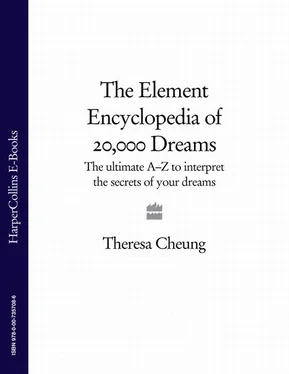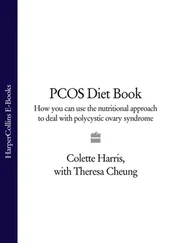A Brief History of Dream Interpretation
‘Now Allah has created the dream not only as a means of guidance and instruction, I refer to the dream, but he has made it a window on the World of the Unseen.’ Mohammed, the Prophet
Ancient art and literature are crowded with references to dreams. For thousands of years dreams have been credited with supernatural or prophetic significance by the majority of the world’s spiritual traditions. The Bible, for instance, makes it clear that dreams are divine messages and this explanation for dreams was shared by the ancient Egyptians, Greeks and Romans, all of whom also believed that dreams had healing powers.
Certain cultures, such as the Australian Aborigines and many African and Native American tribes, have always believed dreaming to be a way in which an individual can enter into the collective spirit memory. To this day, dream pooling plays an important role in those societies where tribal members gather together for the purpose of interpreting dreams. Another view is held by the Inuit of Hudson Bay in Canada, who believe that when a person falls asleep and dreams, their soul goes wandering.
The Egyptians are thought to have been the first to develop a system of contrary dream interpretation; a positive dream, for example, predicts misfortune and a nightmare predicts an improvement in waking fortunes. They produced the earliest known dream dictionary, written approximately 4,000 years ago. Now called the Chester Beatty Papyrus, it came from Thebes in Egypt and is kept in the British Museum.
It was the ancient Greeks, however, who first proposed the theory that dreams were not from some external, divine source but internal communications, or the divine spark within. Plato (427-347 BC) suggested that dreams were expressions of a person’s hidden desires, whilst his pupil Aristotle (384-322 BC) speculated that dreams shared similar themes and were not divine oracles but coincidences. It was the ‘father of medicine’ Hippocrates (460-377 BC) who proposed that dream symbols reflect the state of the dreamer’s body—for example, fire denoted indigestion—and should be regarded as valuable diagnostic tools.
The first fully-fledged dream researcher to focus on dream symbols and dream themes was a Roman living in Greek Asia Minor called Artemidorus (AD 138-180), who wrote a book about dream interpretation that is still in print. As far as Artemidorus was concerned, dream symbols had certain meanings but the most important aspect of dream interpretation was the symbols’ personal significance to the dreamer, along with the dreamer’s personal circumstances.
In much of Europe, even though the early Christians respected dreams for their spiritual significance, the repressive control of the Roman Catholic Church put a stop to any attempts at dream interpretation. By the fifteenth century, dreams were regarded as no longer significant or important. Even a century or so later, Shakespeare called them ‘children of the idle brain’. This school of thought persisted into the eighteenth century, when dreams were still thought to be meaningless.
In the early nineteenth century, when the restrictive influence of the Church began to wane and members of the German Romantic movement—in their quest for spontaneous expression—rediscovered the potential of dreams, a revival of interest in dream interpretation began to trickle into the mainstream with the publication of popular dream dictionaries such as Raphael’s Royal Book of Dreams (1830). The stage was now set for Freud and Jung; two men who continue to have the greatest impact on the way we interpret dreams today.
The Freud and Jung Revolution
‘Dreams are often most profound when they seem the most crazy.’ Sigmund Freud
Austrian psychoanalyst Sigmund Freud (1858-1939) opened the door to the scientific study of dreams with his book, The Interpretation of Dreams (1900). In a relatively prudish age, he caused general outrage with his controversial theory that dreams are wish-fulfillment fantasies that have their origins in our infantile urges, in particular our sexual desires.
Freud believed that the human mind is made up of the id, the primitive or unconscious mind; the ego, the conscious mind which regulates the id’s antisocial instincts with a self-defense mechanism, and the superego, which is the consciousness that in turn supervises and modifies the ego. According to Freud, the id is controlled by the pleasure principle (the urge to gratify its needs) and the instinct that the ego finds hardest to manage is the sexual drive first awakened in childhood. The id comes to prominence in dreams, when it expresses in symbolic language the urges repressed when we are awake. Symbols are used, because if these drives were expressed literally, the ego would be shocked into waking up. To successfully interpret a dream the symbols need to be uncovered and their true meaning discovered. The way that Freud suggested doing this was a technique called ‘free association’ or spontaneously expressing the responses that immediately spring to mind when certain words relating to the dream are put forward. The aim is to limit interference from the ego to discover the dreamer’s unconscious instincts.
Swiss analytical psychologist Carl Gustav Jung (1875-1965), although an initial supporter of Freud’s ideas, could never fully agree with them. He felt there was far more to dreams than hidden sexual frustration and put forward the theory of the ‘collective unconscious’: a storehouse of inherited patterns of experiences and instincts common to humans and expressed in dreams in universal symbols, which he called ‘archetypes’. According to Jungian theory, the psyche is made up of the personal unconscious and the collective unconscious, and when a symbol appears in a dream, it is important to decide whether it relates to us personally or is an archetype. The way Jung suggested we do this is by a technique called ‘direct association’, i.e. concentrating only on the dream symbol when you think about the qualities associated with it.
Jung speculated that the unconscious mind projected dream symbols in an attempt to bring the conscious and unconscious mind into a state of balance he called ‘individuation’. According to his theory, the only way the unconscious mind can express itself fully is in dreams, so it will flood our dreams with symbolic messages that reflect our current progress in waking life. These messages can bring comfort and guidance, or bring repressed urges to the fore, but their aim is the same—to lead to our fulfillment. However, before we can benefit from such intuitive wisdom, we first of all need to understand the language of symbols.
Other Important Dream Theorists
Austrian psychologist Alfred Adler (1870-1937) suggested that dreams are all about wish-fulfillment because they allow the dreamer to have skills and powers denied to him or her in waking life. According to Adler, ‘the purpose of dreams must be in the feelings they arouse.’
Gestalt psychologist Fritz Perls (1893-1970) believed that dreams project hidden aspects of our personalities and the best way to interpret them is to use a non-interpretative interviewing technique. In other words, you ask your dream character or object what they are trying to say. Then you try to adopt the dream’s mindset and answer the questions.
Australian dream expert Gayle Delaney suggests using an interviewing technique that addresses questions such as ‘how did the dream make you feel?’ or ‘how can you connect your dream with your waking life?’
Some dream theorists believe dreams deal with problems we can’t solve in waking life and offer solutions. Looking at them in the light of waking day, and believing them to be full of insight, we may sometimes come up with new ideas or insights while studying and interpreting them.
Читать дальше


![Theresa Cheung - The Dream Dictionary from A to Z [Revised edition]](/books/618735/theresa-cheung-the-dream-dictionary-from-a-to-z-r-thumb.webp)
![Theresa Cheung - The Dream Dictionary from A to Z [Revised edition] - The Ultimate A–Z to Interpret the Secrets of Your Dreams](/books/692092/theresa-cheung-the-dream-dictionary-from-a-to-z-r-thumb.webp)








